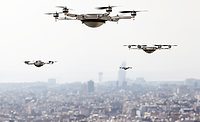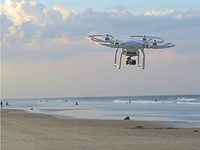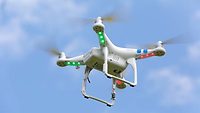UPS Tests Drones in Florida

Package delivery service UPS has successfully tested a drone that can launch from the top of a delivery car and autonomously deliver a package.
UPS conducted the test on Monday in Lithia, Fla. with Workhorse Group, an Ohio-based battery-electric truck and drone developer. Workhorse built the drone and the electric UPS package car used in the test.
“This test is different than anything we’ve done with drones so far. It has implications for future deliveries, especially in rural locations where our package cars often have to travel miles to make a single delivery,” said Mark Wallace, UPS senior vice president of global engineering and sustainability. “Imagine a triangular delivery route where the stops are miles apart by road. Sending a drone from a package car to make just one of those deliveries can reduce costly miles driven. This is a big step toward bolstering efficiency in our network and reducing our emissions at the same time.”
With ORION, UPS’s On-Road Integrated Optimization Navigation routing software, a reduction of just one mile per driver per day over one year can save UPS up to $50 million. UPS has about 66,000 delivery drivers on the road each day. Rural delivery routes are the most expensive to serve due to the time and vehicle expenses required to complete each delivery. In this test, the drone made one delivery while the driver continued down the road to make another. This is a possible role UPS envisions for drones in the future.
“Drivers are the face of our company, and that won’t change,” Wallace said. “What’s exciting is the potential for drones to aid drivers at various points along their routes, helping them save time and deliver on increasing customer service needs that stem from the growth of e-commerce.”
The drone used in Monday’s test was the Workhorse HorseFly™ UAV Delivery system. It is a high-efficiency, octocopter delivery drone that is fully integrated with Workhorse’s line of electric/hybrid delivery trucks. The drone docks on the roof of the delivery truck. A cage suspended beneath the drone, extends through a hatch into the truck. A UPS driver inside loads a package into the cage and presses a button on a touch screen, sending the drone on a preset autonomous route to an address. The battery-powered HorseFly drone recharges while it’s docked. It has a 30-minute flight time and can carry a package weighing up to 10 pounds.
For the test, Workhorse preset the route for the drone. But in the future, routes could be determined by UPS’s On-Road Integrated Optimization and Navigation (ORION), which is the company’s proprietary routing software.
UPS has been testing automation and robotics technologies, including drones, for years. Last September, UPS staged a mock delivery of urgently needed medicine from Beverly, Mass. to an island three miles off the Atlantic coast. Additionally, UPS is using drones extensively for humanitarian relief, partnering with third-party organizations to deliver life-saving blood and vaccines to hard-to-reach locations in Rwanda. UPS also is utilizing drones to check inventory on high storage shelves in its warehouses.
Looking for a reprint of this article?
From high-res PDFs to custom plaques, order your copy today!








